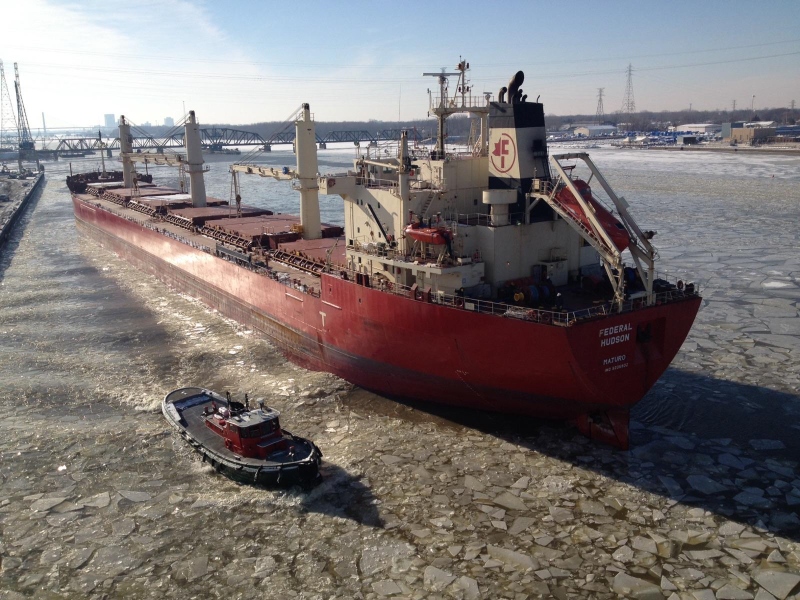The Coast Guard has lowered rates for Great Lakes pilots in most areas, while adding a calculation favored by shippers and ports.
In a final rule on this contentious issue published Thursday — to take effect Oct. 2 — hourly rates for the St. Lawrence Seaway go from the $580 proposed in a supplemental rule to $601, and on Lake Ontario from $398 to $408.
But Lake Erie drops from $448 to $429, and lakes Huron, Michigan and Superior go from $264 to $218. The rule also raises annual pilot compensation to an inflation-adjusted $332,963 for 2017 compared to $326,114 for 2016.
For the first time, the Coast Guard will account for a weighting factor, so larger ships yield higher pilotage revenues than smaller ones. The rule also mandates a change point at the Iroquois Lock on the St. Lawrence, so pilots are adequately rested on that stretch of water.
All the changes in calculations are “a needed correction to better align our projected revenues with the pilot associations’ actual collections, as evidence shows that pilotage revenue significantly exceeded what was projected in 2016, even factoring in above-average traffic,” the Coast Guard said, noting the changes will mean an annual cost increase to shippers.
The new calculations “will continue to encourage pilot retention, ensure safe, efficient, and reliable pilotage services on the Great Lakes, and provide adequate funds to upgrade and maintain infrastructure,” they said.
The Coast Guard establishes rates for Great Lakes pilots while rates elsewhere in the country are set at the local level. The rates must be reviewed annually.
The agency originally sought a 14% rate increase primarily to cover eight new pilots needed because of workload and fatigue factors as well as the number of older pilots approaching retirement. For example, in District Two, which includes Lake Erie and the Detroit River, four pilots — or 30% of the total — are over 62.
The Coast Guard staffing model lowered the number of pilots needed in the lakes from 54 in the proposed rule to 49. Forty-five pilots are expected to be working this year.
Pilots’ rates elsewhere are higher. New Orleans pilots, for example, average $459,051 a year, the rule notes. But shippers argued rates shouldn’t be comparable, since conditions on the lakes differ from elsewhere in the country and the season is not year-round.
Meanwhile, ports and shippers last year sued the Coast Guard seeking a 2016 rate reduction of at least 20.6%, arguing the agency’s calculations were flawed and the increases arbitrary and capricious. Pilots associations have joined the suit on the Coast Guard side.





